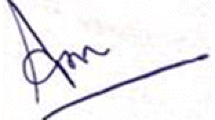Abstract
Fabrication temperature is an important factor affecting the manufacturability of electronic devices, especially for the bottom-up self-assembled nano-device. In this study, we used a lateral-bridged zinc oxide (ZnO) nanowire array UV sensor as a model to investigate the influence of temperature on device performance over the entire manufacturing process, from sensor fabrication to packaging. We found that annealing of the SiO2 substrate would make ZnO seed layer on top of it more compact and uniform, and hence improve the lateral orientation and uniformity of ZnO nanowires grown from the seed layer. With the annealed substrate, the light-to-dark current ratio increased by two orders of magnitude. On the contrary, annealing the ZnO seed layer would deteriorate the light-to-dark current ratio of the sensor, because annealing caused most of the grains in the seed layer to become vertically aligned, which in turn affected the lateral growth of ZnO nanowire arrays. During the packaging process, the surface structure of ZnO nanowires would change if the chip welded at a temperature of 230°C for 2 min, resulting in a decrease of light-to-dark current ratio by three orders of magnitude.
Similar content being viewed by others
References
Lao J Y, Wen J G, Ren Z F. Hierarchical ZnO nanostructures. Nano Lett, 2002, 2: 1287–1291
Brillson L J, Ruane W T, Gao H, et al. Spatially-resolved cathodoluminescence spectroscopy of ZnO defects. Mater Sci Semiconductor Processing, 2017, 57: 197–209
Kim H, Yong K. A highly efficient light capturing 2D (nanosheet)-1D (nanorod) combined hierarchical ZnO nanostructure for efficient quantum dot sensitized solar cells. Phys Chem Chem Phys, 2013, 15: 2109
Ramon B. Tool and Manufacturing Engineers Handbook. Vol VI. 4th ed. Design for Manufacturability. Dearborn: Society of manufacturing engineers, One SME Drive, 1993
Albiss B A, AL-Akhras M A, Obaidat I. Ultraviolet photodetector based on ZnO nanorods grown on a flexible PDMS substrate. Int J Environ Anal Chem, 2015, 95: 339–348
Manekkathodi A, Lu M Y, Wang C W, et al. Direct growth of aligned zinc oxide nanorods on paper substrates for low-cost flexible electronics. Adv Mater, 2010, 22: 4059–4063
Zhang F, Niu S, Guo W, et al. Piezo-phototronic effect enhanced visible/UV photodetector of a carbon-fiber/ZnO-CdS double-shell microwire. ACS Nano, 2013, 7: 4537–4544
Alenezi M R, Henley S J, Silva S R P. On-chip fabrication of high performance nanostructured ZnO UV detectors. Sci Rep, 2015, 5: 8516
Gao Y, Zhang S, Zhang H. Growth of ZnO nanowires on flexible polyimide substrates. In: Proceedings of the 13th IEEE International Conference on Nanotechnology (IEEE-NANO 2013). Beijing, 2013. 1038–1041
Elfadill N G, Hashim M R, Saron K M A, et al. Ultraviolet-visible photo-response of p-Cu2O/n-ZnO heterojunction prepared on flexible (PET) substrate. Mater Chem Phys, 2015, 156: 54–60
Cui J B, Daghlian C P, Gibson U J, et al. Low-temperature growth and field emission of ZnO nanowire arrays. J Appl Phys, 2005, 97: 044315
Mohammad S M, Hassan Z, Ahmed N M, et al. Fabrication of low cost UV photo detector using ZnO nanorods grown onto nylon substrate. J Mater Sci-Mater Electron, 2015, 26: 1322–1331
Qin Y, Yang R, Wang Z L. Growth of horizonatal ZnO nanowire arrays on any substrate. J Phys Chem C, 2008, 112: 18734–18736
Zhu G, Yang R, Wang S, et al. Flexible high-output nanogenerator based on lateral ZnO nanowire array. Nano Lett, 2010, 10: 3151–3155
Xu S, Qin Y, Xu C, et al. Self-powered nanowire devices. Nat Nanotech, 2010, 5: 366–373
Chuang M Y, Yu H C, Su Y K, et al. Density-controlled and seedless growth of laterally bridged ZnO nanorod for UV photodetector applications. Sens Actuat B-Chem, 2014, 202: 810–819
Gao Z, Zhang J, Li J, et al. Improving the fabrication uniformity of ZnO nanowire UV sensor by step-corner growth mode. Ceramics Int, 2018, 44: 11972–11982
Zhou J, Gu Y, Hu Y, et al. Gigantic enhancement in response and reset time of ZnO UV nanosensor by utilizing Schottky contact and surface functionalization. Appl Phys Lett, 2009, 94: 191103
Wang Z L. Nanobelts, nanowires, and nanodiskettes of semiconducting oxides-from materials to nanodevices. Adv Mater, 2003, 15: 432–436
Farhat O F, Halim M M, Abdullah M J, et al. Growth of vertically aligned ZnO nanorods on Teflon as a novel substrate for low-power flexible light sensors. Appl Phys A, 2015, 119: 1197–1201
Soci C, Zhang A, Xiang B, et al. ZnO nanowire UV photodetectors with high internal gain. Nano Lett, 2007, 7: 1003–1009
Liu S Y, Chen T, Wan J, et al. The effect of pre-annealing of sputtered ZnO seed layers on growth of ZnO nanorods through a hydrothermal method. Appl Phys A, 2009, 94: 775–780
Huang J P, Wu X Z, Li S Y. Thermal expansion coefficients of thin crystal films. Commun Theor Phys, 2005, 44: 921–924
Chen S, Chen J, Liu J, et al. The effect of high-temperature oxygen annealing on field emission from ZnO nanowire arrays. Appl Surf Sci, 2015, 357: 413–416
Zheng Y, Chen C, Zhan Y, et al. Luminescence and photocatalytic activity of ZnO nanocrystals: Correlation between structure and property. Inorg Chem, 2007, 46: 6675–6682
Muchuweni E, Sathiaraj T S, Nyakotyo H. Effect of annealing on the microstructural, optical and electrical properties of ZnO nanowires by hydrothermal synthesis for transparent electrode fabrication. Mater Sci Eng-B, 2018, 227: 68–73
Author information
Authors and Affiliations
Corresponding author
Additional information
This work was supported by the National Natural Science Foundation of China (Grant No. 11204009), the Beijing Municipal Natural Science Foundation (Grant Nos. 4142005 and 4182014), and Beijing Education Commission Science and Technology Program (Grant No. KM201810005025).
Rights and permissions
About this article
Cite this article
Zhao, L., Gao, Z., Zhang, J. et al. Effect of fabrication temperature on the manufacturability of lateral ZnO nanowire array UV sensor. Sci. China Technol. Sci. 63, 668–674 (2020). https://doi.org/10.1007/s11431-019-1464-4
Received:
Accepted:
Published:
Issue Date:
DOI: https://doi.org/10.1007/s11431-019-1464-4




